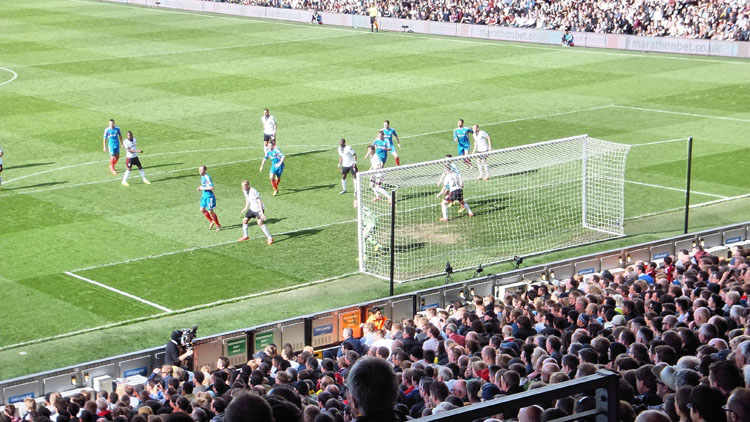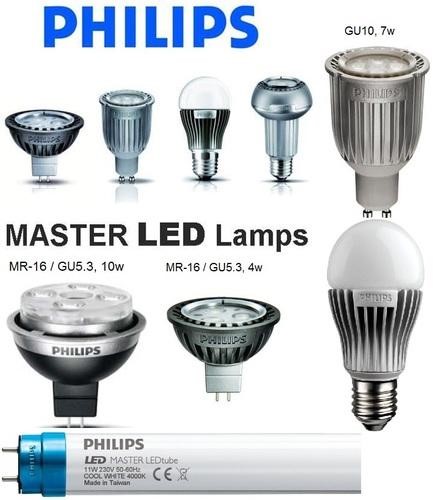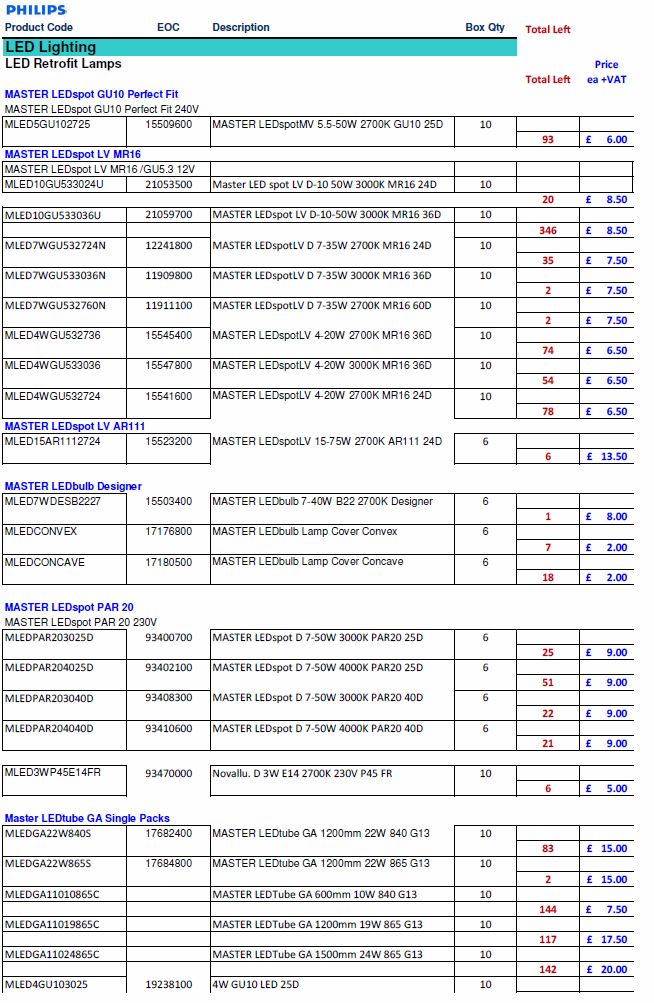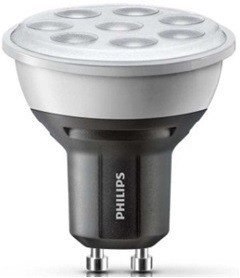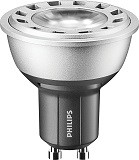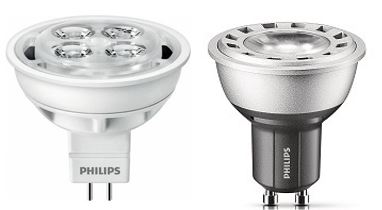TAG | philips led
28
Third Premier League club goes LED – how long before the other 17 follow?
Comments off · Posted by admin in LED, LED Floodlights, Philips LED
LUX reports: Premier League football club Hull City is planning to upgrade its pitch lighting to LED floodlights this summer. The move is aimed at meeting the needs of modern high-definition TV broadcasting as well as opening up the KC Stadium to a wider range of events.
It has opted for Philips’ ArenaVision LED floodlighting system, which has been specially developed to meet the TV broadcast requirements specified by the Premier League. It can also provide the entertaining lighting effects needed to build atmosphere and excitement before and after matches.
The lighting will be installed at the KC Stadium during this summer’s break in time for the start of the next season.
LEDs are increasingly taking over from metal halide as the floodlighting source of choice. LED technology allows sports stadiums to use lighting in a more creative way, making them attractive venues for events such as concerts. Control systems allow individual floodlights to be switched on or off or dimmed. Systems such as Philips’ ArenaVision makes it possible to create pre-set light scenes for specific applications, such as dimmed energy-saving levels for cleaning and maintenance.
John North, managing director of the Stadium Management Company, said: ‘The new state-of-the-art, energy-efficient LED pitch lighting system for the KC Stadium delivers the ability to instantly change from one light setting from another. This is not just a game changer for spectators but also for the future of the modern multi-purpose stadium, a key feature of the operational strategy for our sporting venues.’
Hull will also benefit from the maintenance savings accruing from the long life of LEDs. Typically, metal halide floodlighting lamps should be replaced every three seasons to maintain the lighting levels required. The Philips LED system is expected to last more than 10 seasons.
Andy Gowen, director of public lighting at Philips Lighting UK, commented: ‘The main priority for professional sports venues has always been to ensure the correct light levels on the pitch, but with the arrival of the digital age, there is a great deal more on offer.
‘Our ArenaVision LED floodlighting bridges the worlds of entertainment lighting and static, high quality pitch lighting to deliver a memorable experience for visitors, whether they are coming to watch Hull in action or to hear their favourite bands perform.’
energy efficient lighting · led flood lights · led floodlights · led lighting · led stadium · Novel Energy Lighting · philips led · stadium lighting
27
Philips: Smart lighting can neutralise the age differences in your office
Comments off · Posted by admin in LED, LED downlights, LED GU10, LED panels, LED Spots, Philips LED
Something for everyone: Whether your eyes are fresh out of university, or approaching retirement, Philips Connected Lighting allows you to adjust the office lighting to your needs. Photo is from pcruciatti via Shutterstock
Enough of that, says Philips, which is calling for ‘personalised lighting in your workplace’ to assure that employees of all ages work under the correct, individualised lighting conditions that allow them not only see (what a concept!) but, even better, to produce.
It’s part of the Dutch giant’s efforts to market its ‘Connected Lighting for offices’, which it first introduced a year ago and which it has showcased at The Edge, the environmentally heralded Amsterdam offices of consulting firm Deloitte. The system allows workers to use smartphone apps that adjust overhead lights individually. The lights are connected to an ethernet network, with each light having its own internet address.
‘A 45+ worker tends to need almost double the light needed by a 20 year old for everyday tasks,’ the Dutch lighting gaint says in a press release. ‘The one-light-for-all principle is outdated at a time when we are all living and working longer. Today 30-50 per cent of people in work are over 45 years old…Over the age of 45, people begin to experience a deterioration of their near-sight vision. Research shows, a 60-year-old person needs between two and five times as much light as a 20-year-old to see the same visual detail, let alone to concentrate.’
The wrong lighting could even undermine health and productivity, Philips says.
‘People often call off sick due to headaches and fatigue,’ notes Bianca van der Zande, principle scientist at Philips Lighting. ‘These symptoms may have many underlying causes but perhaps one of these could be the result of prolonged eye-strain due to poor lighting conditions in their working lives. Inadequate lighting can lead to visual discomfort, neck pain, headaches, fatigue and perhaps eventually sick leave.’
A 2013 survey by Philips found that 90 per cent of people who could adjust desk lamps for brightness and colour temperature reported ‘sharper vision, optimum eye comfort, (and) the ability to see smaller details and improved contrast.’ It was a bit of a foregone conclusion, but the idea now is that ethernet-connected, app-controlled overhead lights can deliver the same benefits.
Philips is also calling for government regulations to mandate individualised lighting.
‘Regulatory bodies should take these findings into account for the well-being and productivity of today’s workforce,” says van der Zande.
‘People spend 80-90 per cent of their time indoors from which around 20 per cent is spent at work so the indoor environment determines to a large extent the comfort and wellbeing of the office employee, influencing their performance. It is important that human-centric lighting becomes a part of the regulatory standards, allowing architects and building designers to advise for the best solutions – not only for offices, but for all building environments.’
At long last, harmony across the generations? That would be a story for the ages.
Visit us at Novel Energy Lighting to discuss your office lighting refit, we offer the full Philips range and can provide lighting design advice as needed
connected lighting · energy efficient lighting · LED downlights · led GU10 · led lighting · led panels · led tubes · Novel Energy Lighting · office lighting · philips led
13
Philips LEDs Installed In Costa Cruises Ships Meet New Sustainability Goals
Comments off · Posted by admin in LED, LED downlights, LED GU10, LED Spots, LED Tubes, Philips LED
Royal Philips has, through its Lighting Division, completed the upgrade of 10 ships for Europe’s leading holiday cruise company, Costa Cruises. More than 300,000 Philips LED lights have been installed to enable a massive 60% reduction in the energy used to power each ship’s lighting. By James Hunt:
 |
Philips has installed MasterLED spots and CoreProLED tubes installed on 10 Costa Cruises’ ships – saving large amounts of fuel, money and carbon emissions.Costa Cruises |
 |
This interior shot of Costa Fascinosa shows just how much lighting there is in a modern cruise liner – the energy savings can be big using LED lighting.Costa Cruises & AP |
In modern cruise ships, lighting systems account for up to 25% of the total energy consumption that is not used for propulsion. Therefore, any reduction in electricity consumption for lighting reduces the vessel’s operating costs, as well as reducing the environmental impact.
Electricity aboard these big cruise ships is provided by the diesel engines and generators – no direct drive to the screws these days. Typically, Costa Cruises’ ships are powered by diesel-electric power plant comprising four to six 12-cylinder four-stroke medium speed diesel generating sets (usually by Wartsila with electric propulsion motors by GE of around 21MW coupled to fixed-pitch propellers – though some ships use azipod thrusters instead).
A typical output, depending upon the actual ship, might be around 70 – 80MW (over 100,000 BHP). As well as providing propulsion, these main generators provide power for all shipboard consumers from propulsion motors to hotel functions, such as lighting and air conditioning.
Regardless of the propulsion system used, fuel consumption cost is always a big issue with cruise ships and Costa, for example, has reported a reduction of around 11% in fuel consumption, and with reduced CO2 emissions too. The company has already experimented with LED lighting combined with automatic lighting-control that adjusts light levels to match sunlight intensity.
Slashing carbon emissions
It is here, of course, that Philips comes in, with its over 300,000 LED lights being installed in ten of Costa Cruises’ ships. This lighting renovation enables total annual savings of 30,000 tonnes in CO2 emissions.
It is only relatively recently that the shipping industry has had to meet increasingly tough emissions targets, and the switch to energy efficient LED technology is the latest step towards Costa Cruises’ goal to slash its CO2 emissions according to targets it set out in its Sustainability Report published in 2014.
LED spots and tubes
Philips’ MasterLED spots and CoreProLED tubes installed on these ten cruise ships emit excellent quality white light that does not irritate or tire the eyes. Moreover, the LED light sources last far longer than the older conventional lamps (up to 40,000 hours), so maintenance costs are reduced, while the lighting itself is bright and warm and provides an inviting atmosphere for passengers.
Philips completed the re-lamping of three ships back in 2013, with the lighting of the remaining seven ships completely renovated by December 2014. Philips is also involved in the LED lighting renovation of Costa Cruises’ headquarters in Genoa, Italy.
Cruise ships operate with big fixed costs, so Costa Cruises’ aim as an operator is always to maximise efficiency. Fuel is one of the biggest costs, and prices have soared over the last few years (the fall in price in 2014 is unlikely to be sustained for long) so the company is keen to keep associated expenditure under careful control.
A sustainability boost
Commented Stefania Lallai, Costa Cruises Sustainability Director: “This initiative between two companies engaged in providing solutions for the mitigation of the impact on the environment represents another step forward by Costa Cruises in the field of sustainability. The lighting project with Philips is an important initiative undertaken to lower the CO2 impact generated by our fleet and to reduce energy consumption on board.”
Philips has long had an important emphasis on sustainability. For example, we reported only a few days ago that in its continued sustainability drive, the company had increased its sales of ‘Green Products’ to 52% of total sales and has achieved its ‘Green Innovation’ target a year ahead of schedule (read about this by using the link at the bottom of this web page).
In terms of Costa Cruises, the Head of Sustainability for Philips Lighting, Nicola Kimm, said: “Travel by sea already has the lowest carbon footprint compared to other forms of transport in the wider tourism industry.
‘’Think of cruise ships as self-contained mini floating cities, powered by their own energy supply. Switching from 50W bulbs to 7W LED technology increases energy efficiency by more than halving each ship’s electricity consumption required for lighting,’’ she pointed out.
There is, however, one Costa Cruises ship that won’t be benefitting from Philips LED lighting – the ill-fated Costa Concordia that sank in early 2012.
Visit us at Novel Energy Lighting to browse our range of Philips LED products, including the MasterLED GU10 lamps and Master and Corepro LED tubes.
corepro led · cruise ship lighting · led GU10 · led tube · marine led · master led · Novel Energy Lighting · philips led · philips lighting
5
Louisville lights Big Four Bridge with dynamic Philips LED system
Comments off · Posted by admin in Uncategorized
Editor in Chief, LEDs Magazine and Illumination in Focus:
Historic railway bridge over the Ohio River now carries pedestrians and cyclists and Louisville has added iconic LED architectural lighting.
Philips Lighting has announced an LED architectural lighting project installed on the historic Big Four Bridge that links Louisville, KY and Jeffersonville, IN across the Ohio River. The dynamic, color-changing solid-state lighting (SSL) is intended to help revitalize the Louisville waterfront and make the pedestrian and bicyclist bridge a destination point in the region.
The project is certainly not the first to use dynamic LED lighting to highlight a railroad heritage in revitalization efforts. For example, the Light Rails project in Birmingham, AL back in the fall of 2013 has drawn tourists and increased safety in Birmingham.
city lighting · color kinetics · energy efficient lighting · led coving · led lighting · led tubes · linear led · Novel Energy Lighting · philips led · rgb coving · rgb strips
26
The halogen ban: Just do it!
Comments off · Posted by admin in LED, LED downlights, LED GU10, LED MR16 lamps, LED Spots, Philips LED

Afterglow: This tone from a halogen lamp could soon fade into history if the EC sticks with its 2016 ban on one of the last vestiges of the incandescent business – halogens.
LUX Reports: Neonlite director Fred Bass argues against the industry’s case to keep energy guzzling halogens alive, calling such a move ‘nonsensical.’
—
Sometime in the next few weeks, the European Commission is expected to vote on whether to delay a ban on halogen lamps. Halogens are the last real bastion of incandescent technology. They are a thriving holdover of conventional filament burning bulbs – superior in many ways to standard filament lamps because they are treated with a halogen gas, improving their colour temperature and their efficiency.
Although the industry has long promoted them for their so-called ‘eco’ benefits, they are only slightly more efficient than the conventional filament bulbs that the EC has already widely banished. They are terribly inefficient compared to modern LED (light-emitting diode) and CFL (compact fluorescent) bulbs. Thus, halogens are carbon culprits. That’s why the EC in 2009 scheduled them for a September 2016 retirement.
The conventional lighting industry, represented by the Brussels-based trade body LightingEurope, is now campaigning for a stay of halogen’s execution. It wants to push the halogen ban out by another four years – to 2020, nearly six years from now. It seems stuck between a rock and hard place: While it tries itself to steer consumers toward an LED future, it claims that quality, performance and price of LEDs will not be ready to meet mass consumer demand until 2020. Europeans today are buying more halogens than anything – more even than CFLs it notes, warning of a bulb shortage if the ban takes hold. As good as LEDs are, they just aren’t ready yet to provide the same quality of light as halogen at an affordable price, nor will they be by 2016, LightingEurope claims. It notes that LEDs lamps are still too different from conventional lamps in appearance, price and quality, and that this difference is confusing consumers.
‘Nonsense,’ say LightingEurope’s critics. LEDs have arrived, are more than ready for prime time, and the sooner the better from an environmental perspective. The conventional industry has had already had half a dozen years to prepare for the ban, which, ironically, it lobbied for itself in the first place. If the big traditional lighting companies like Philips, Osram and GE can’t meet LED demand, then the newfangled companies born in the CFL and LED era can – companies such as Aurora, Neonlite, TCP, LIFX, Opple, Cree, Acuity – they note. Some suggest that the big companies are simply trying to hold onto their old ‘replacement bulb’ business model for as long as possible while they make the difficult transition to LEDs, which vendors say last for 20 years.
Lux recently spoke at length with two leading voices on opposite sides of the issue: Diederik de Stoppelaar, secretary general of LightingEurope, and Fred Bass, a director of Hong Kong-based Neonlite and managing director of its UK-based Neonlite International group, which includes the Megaman brand of LED lamps. Neonlite has no incandescent legacy. It started life some 20 years ago as a CFL company, and today about 90 percent of its business is in LEDs. Bass firmly opposes any delay to the halogen ban.
 Bass (pictured, right) and de Stoppelaar are not completely at odds. They agree that the industry must weed out inferior LED products that are tarnishing the technology’s reputation. They also implore the industry to clear up the confusion surrounding the relative merits of the different lamp technologies – confusion that the industry itself fosters through loose, or at least non-uniform, performance claims via packaging and merchandising.
Bass (pictured, right) and de Stoppelaar are not completely at odds. They agree that the industry must weed out inferior LED products that are tarnishing the technology’s reputation. They also implore the industry to clear up the confusion surrounding the relative merits of the different lamp technologies – confusion that the industry itself fosters through loose, or at least non-uniform, performance claims via packaging and merchandising.
But they couldn’t be further apart on the subject of the ban. In a two-part series, we bring you an edited version of our questions and answers with de Stoppelaar and Bass. Yesterday, de Stoppelaar made the case for delaying the ban until 2020. Today, Bass lays out why the EC should stick to its guns and just get on with the ban as planned:
Lux: The halogen ban is set for 2016, the EC is voting on pushing it back to 2018, and LightingEurope says that’s not even long enough of an extension. They want 2020. What’s your take on all of this?
Bass: I’m very much on the side of no delay at all. You’ve got to understand Megaman’s position. We’ve been making low energy lamps since we started 20 years back. We have no legacy in high energy lamps. We just have low energy. (Almost) all of our business is in LED. So to be fair my perspective is just go for the ban because obviously it suits my business. But taking that apart, if you just look a the bigger picture, the environmental picture and all athe rest of it, to me it makes no sense to delay when LED technology has moved at such a pace compared to all the market predictions. The price is half of what it was expected to be at this stage and it’s going to keep going at that pace. To consider pushing out the ban, it’s just nonsensical.
Right, but…
It would be less credible if they moved the dates. It was such a landmark decision. Then to sort of say ‘oh well the industry doesn’t really like it, we’re going to push the dates out,’ then I think the directives will lose their credibility. So you have the credibility issue, the energy issue, and you have technology that is moving at a much faster pace than was ever predicted. And you have LightingEurope saying we don’t want it to change until 2020. It’s very very strange to me. The consumer is only going to gain by switching to the new technology.
Is there any argument at all for delaying?
If there is a need to change a date you shouldn’t make big changes like 4 years, you should make modest changes, 1 year perhaps. I’m not in favour of any movement at all. I can accept that in some parts of Eastern Europe maybe, the standard of living, market pricing may make the lamps less affordable. I also accept that some of the lamp technology hasn’t got a direct LED replacement, so maybe there could be a case to say that certain types of lamps can be delayed but the vast majority of the common GLS type, A-lamp type products are available, they’re at the right price and to a standard which is good enough for the domestic market. It may not be a 50,000-hour lamp, but 15,000 hours is already good enough for 10 years use or whatever. I can’t understand why you’d push it back.
But then, as you said, you don’t have the legacy business to worry about, the way many of LightingEurope’s members do.
They have a different perspective. They’re not like Megaman without the legacy in halogen. These are big companies with lots of production in these areas. And clearly there must be a conflict of interest when they offer a view on the situation. On the one hand they want to see progress and environmental improvement and on the other hand they’ve got a vested interest in these older technologies as well. It’s not easy for them to manage the situation. But I can’t agree with their position.
Yes, it’s almost bizarre. The industry has been telling the world to move to LEDs for several years, and now their message is that LEDs aren’t ready.
It doesn’t ring true. LightingEurope was taking a a leading role in establishing legislation with Brussels getting the directive in place. They had lots of input. And for them to turn around now and say ‘we want to push it out four years,’ even though we see all the market indications moving faster than we anticipated, I have a problem with that. I suppose in principle we can leave the ban in place for the vast majority of lamps, and maybe there’s some compromise on some smaller issues where the technology isn’t quite ready on certain types or whatever. But I don’t see any need to change it on the mass market.
Are they just holding on to the vestiges of the good old business model of selling replacement lamps, and trying to extend that for as long as possible until they figure out how to make money from long lasting LEDs?
There’s probably something in that. There’s a massive price range in the market. That means margins on LEDs are now very very slim. And there’s an awful lot of new players in the market in LED. It’s fragmenting. If you look at that dynamic for the big players, their predictions on profit on LED will be quite different from what they were a few years ago. So in as much as we see a huge drop in the price of LEDs, that will hit clearly hit the potential profits of big manufacturers clearly. And there’s a lot of new players on the market, so I think market share of the large companies is an issue. If a huge volume of LEDs is required in two years time, I think the market can supply it, but maybe it’s not them.
So there’s not really an overall manufacturing capacity issue that will lead to the bulb shortage that LightingEurope is warning about?
From a Megaman perspective it’s an opportunity. Why isn’t it an opportunity for them as well? It’s odd. There’s going to be a very different model going forward. Five years down the line, whatever state the ban’s in, everybody will be using the longer lasting LED technology and therefore there won’t be the same replacement market. The dynamics of the whole lighting industry are changing. Everybody accepts that and we’re planning for it. We all understand that the traditional incandescent retrofit business is finished. Whether it finishes in 2016 or finishes in 2020, it’s finished.
A lot of LightingEurope jobs are in Europe. Closing down halogen lines could mean costly and politically difficult layoffs.
True. And there again there’s another conflict of interest. From a European perspective one tends to be very mindful of any threat to the loss of European jobs. That will be another factor in their argument. I still don’t think it’s sufficient to delay.
Although your company doesn’t have the legacy burden, it’s a tough business for any company new or old. Nobody’s future is guaranteed.
No. There are lots of new players in the market. It’s a very volatile situation. I’ve been in the business a long time. It’s the most exciting time I’ve ever had in the industry. When I started in the industry, we were using technologies that were 100 years old. Now nothing’s for sure.
So where will the money come from in the future?
It will be a combination of things. The retrofits will be very strong for I guess the next five years. But there will be an increasing amount of integrated fixtures business. The estimates are that in new builds, in five years time, half of the fittings will be LED. So we have to be in integrated fixtures as well as retrofits. And we have to be in other areas like smart controls. We don’t know how big that will be but we think it’s a very significant development; it adds considerably to energy savings. The Megaman philosophy is not to get into complex building management system, but to find solutions that can be fitted almost like a retrofit. Wireless systems and so on mean we have a ready market without rewiring a building.
What about the problem that LightingEurope secretary general Diederik de Stoppelaar mentioned – that there are non-brand names selling substandard lights at very low prices, tarnishing the reputation of the LED industry?
That’s one area where actually I agree with him. There’s a lot of new players. Market surveillance in Europe is a key issue that we’ve been going on about for many years – LightingEurope and ourselves. So I would agree, but I don’t see that that has anything to do with the delay in the ban. There is an issue with keeping out the rubbish but that is not I my mind any excuse for a delay. It’s nonsensical: ‘We’ve got rubbish in the market, we must delay the ban.’ What’s that got to do with anything? It’s a separate issue.
I think you also might agree with LightingEurope’s point that the industry needs clear, consistent marketing and merchandising in which the consumer can understand and trust the information on packaging, signage and so forth.
(Yes). I walk into a retail shop and I’m totally confused by the whole display in the lighting area. I’m a lighting guy for 35 years and I’m totally confused by the way it’s presented, the way it’s sold to the public. There’s an environmental organisation in Brussels, ECOS (European Environmental Citizens’ Organisation for Standardisation) where one guy, Edouard Toulouse is really big on this.He wants to change the whole way this thing is sold to the public. And I’m totally with him. It’s so confusing. Waht does the normal guy do when he walks in the store? What does he buy? It’s impossible. Lamp packaging and display is a mess. The industry knows it. The authorities know it. But it has nothing to do with whether you should ban the product or not.
Visit Novel Energy Lighting to get your LED retrofits for halogen lamps.
energy efficient lighting · Halogen Lamp · led bulb · led GU10 · led lamp · led lighting · led mr11 · led mr16 · Megaman LED · Novel Energy Lighting · philips led
Lights are used everywhere, in homes, offices, shops, hotels, and hospitals. And since these lights are constantly needed, you will have to ensure that they are well-maintained. However, the maintenance of these lights may be a tiresome task. Especially if you own a restaurant or a hotel, you will need to make sure that your lights are powerful and durable enough to provide consistent and pleasing lighting for your customers. Dead bulbs are one of the most frequent problems hotels encounter, leading to customer complaints and bad reviews. Failed lighting can also stop operations completely in commercial spaces like offices and warehouses.
Fluorescent tubes, incandescent, and halogen bulbs are the main problem in most buildings, ramping up electricity consumption, and failing after a few hundred hours. These traditional lamps cannot put up with the lighting demands which are made from them daily. Therefore, why not use lights which give you good quality of lighting and last long at the same time?
With Philips LED lights, you will get the light output you need, and they last for years. Being the leader in the lighting industry, their range of top quality LED tubes, lamps, and bulbs offer you superior lighting and have a long rated lifespan of 40,000 hours. Their competitive pricing and energy efficiency mean these lights will pay for themselves in less than a year and will save you almost 90% on your energy costs. All Philips LED lamps come as a simple retrofit replacement to your traditional light bulbs and are therefore suitable for all general lighting purposes.
Additionally, the Philips LED range is eco-friendly;, they do not contain harmful chemicals like mercury or lead, unlike fluorescent lamps. The high energy savings mean you can also reduce your carbon footprint substantially. Your maintenance costs will drop, since you will no longer be replacing failed lamps and tubes all the time, leading to high lifetime cost of ownership savings. Thanks to their long lifetime, they are a fit and forgetsolution.
Novel Energy Lighting supplies the full range of Philips LED Tubes, Bulbs, Lamps, Candles, and other LED lamps and fittings which are perfect for all commercial uses like hotels, lobbies, sports bars, night clubs, restaurants, banquet halls, etc. and they can even be used for general lighting applications in homes and office areas. Most of the MasterLED range come with a 5 year warranty, which will give that extra peace of mind. Furthermore, these lights do not emit UV and IR rays, making them ideal for sensitive applications like galleries.
bulbs · Candles · lamps · LED lamps · philips led · philips led tubes
15
Philips MasterLED and Corepro LED Clearance Bonanza!!
Comments off · Posted by admin in LED, LED Candles, LED GLS, LED GU10, LED MR16 lamps, LED Spots, LED Tubes, Philips LED
We are offering our Philips MasterLED and Corepro LED lamps, bulbs, and tubes at ROCK BOTTOM discount pricing. We must clear the shelves! These are current or previous generation lamps. Check part numbers for details.
**Offers considered for volume orders**
Please click HERE for details:
led clearance · led discount · led lighting · led sale · lighting sale · Novel Energy Lighting · philips clearance · philips led · philips masterled
8
Philips LED’s – The Superior Lighting Solution
Comments off · Posted by admin in LED, Philips LED
Aren’t you getting tired of inefficient lighting from traditional halogen, CFL, and incandescent lamps? Although these lamps are cheap, they fail to give you the same amount of brightness as LEDs, and their operating lifetimes are very short. Generally you will see these lamps fail in as little as 1000hours, which means you will be up on ladders replacing them, and spending money on new lamps.. What’s more, halogen lamps produce a lot of heat and consume enormous amounts of electricity to produce light (up to 90% more than LEDs). Thus, you are left you with a huge energy bill as well.
Wouldn’t it be easier to just use quality LED lamps or bulbs instead? They are durable, lasting up to 50,000hours (many years of operation), and will not lose their brightness significantly even after using them for lengthy periods. With LED lamps, you will always get the brightest quality of light, which is far superior to any halogen. These lamps are available from several major brands in the lighting industry, the leader being Philips.
Novel Energy Lighting provides you with a wide range of Philips LED bulbs, tubes, lamps, candles, panels etc. One of the most notable Philips products is the Philips Master LED MR16 lamp. This quality product is well known for being an ideal retrofit for all spot and general lighting purposes, thus making it suitable for use in public areas as well as homes and offices. It is a most cost-effective substitute for traditional halogen lamps, and we say ‘cost-effective’ because it reduces your energy costs by 80%. In other words, this lamp pays for itself in less than a year. It even comes with an peace-of-mind 5 year warranty period.
Another fascinating feature of this particular Philips LED product, is the patented TransforMax technology, which allows the MR16 lamp to work on a majority of transformers and dimmers. And its Airflux technology facilitates passive cooling of this lamp, thus preventing it from getting overheated if used for prolonged periods. This lamp available in 7W=35W, 7W=40W, and 10W=50W dimmable versions, which means that it is a retrofit replacement to most standard halogen lamps and due to its efficient use of energy, its lasts for about 40,000 hours.
The additional benefit you get from using these LED products is that they do not emit any UV or IR rays, making them ideal for heat sensitive objects. And an added perk of using LED lights is that they are designed to reduce your maintenance costs without compromising on brightness.
At Novel Energy Lighting, you will find many Philips LED lamps in a variety of wattages, colour temperatures, and beam angles as a retrofit replacement for almost all traditional bulb types on the market. They come in both dimmable and non-dimmable variety, where the non-dimmable offer real value for money for those areas where dimming is not required much. But that’s not all, we supply many other carefully selected LED products from several trusted manufacturers, available at very reasonable prices
philips led · Philips LED bulbs · Philips Led Candles · Philips led panels · philips led tubes
14
Philips LED GU10- Perfect Replacement for Halogens
Comments off · Posted by admin in LED, LED GU10, Philips LED
Philips LEDs are the most popular downlight retrofit solution, with their quality light output and ‘perfect fit’ dimensions. This allows them to plug into any existing fittings. GU10s come in narrow beam for accent lighting, and medium beam for general flood lighting.
Novel Energy Lighting supplies the full Philips LED range at competitive prices. The Philips Master LED Value GU10, which is also dimmable, comes in two outputs: the 4.5W which equivalent to 35W, and the 5.3W which is equivalent to 50W. The Philips MasterLED Pro led GU10 lamp has wattage of 5.5W that equivalent to 50W and is dimmable. Available in different colour temperatures including 2700K (warm white), 3000K (white), and 4000K (cool white).
Philips Master LED VALUE spot GU10 5.3W (=50W) is DIMMABLE, delivering MASTER LED quality and performance where longest lifetime is not required. Delivers a warm, halogen-like accent beam, which is ideal for spot and general lighting purposes. Designed to be the same size (‘Perfect Fit’) as GU10 halogens, to make retrofitting a breeze! It delivers huge energy savings (>80% savings over standard halogen), and minimises maintenance cost without any compromise on brightness. Eco Design DIM2 Compliant. Compatible with existing GU10 fixtures and designed as a retrofit replacement alternative for 50W halogen lamps. Furthermore there is no harmful UV or IR in the beam.
Philips Master LED VALUE GU10, 5.3W=50W, 2700K, 36D, Dimmable
Product Specifications for Philips Master LED VALUE spot GU10:
- Voltage: 230-240V
- Wattage: 5.3W
- Equivalent To: 50W
- Average Lifetime: 25,000 hours
- Base: GU10
- Shape:Reflector
- Dimmable:Yes
- Beam Angle: 36 Deg
- Colour Temp: 2700K (warm white)
- Warranty: 3 years
- CRI: 80 Luminous
- Flux: 355Lm
- Luminous Intensity: 950cd
- Length: 55mm
- Diameter: 50mm
- Manufacturer Code: 929001111002
Philips Master LED GU10 Spot, New 5.5W, 2700K, 40D, Dimmable
Philips Master LED spot GU10 New 5.5W (=50W) ‘Perfect Fit’ is DIMMABLE and delivers a warm, halogen-like accent beam that is ideal for spot and general lighting purposes. Designed to be the same size (‘Perfect Fit’) as GU10 halogens, to make retrofitting a breeze! It delivers huge energy savings (>80% savings over standard halogen), and minimises maintenance cost without any compromise on brightness. An upgrade to the 50W equivalent 6W GU10 MASTER LED range, with DIM2 compliance, and improved lumen package and energy reduction. Eco Design DIM2 Compliant. Increased lumen output by 50lm. Compatible with existing GU10 fixtures and designed as a retrofit replacement alternative for 50W halogen lamps. Furthermore there is no harmful UV or IR in the beam.
Product Specifications :
- Voltage: 230-240V
- Wattage: 5.5W
- Equivalent To: 50W
- Average Lifetime: 40,000 hours
- Base: GU10
- Shape: Reflector
- Beam Angle: 40 Deg
- Dimmable: Yes
- Colour Temp: 2700K (warm white)
- Warranty: 5 years
- CRI: 80
- Luminous Flux: 350Lm
- Luminous Intensity: 800cd
- Length: 55mm
- Diameter: 50mm
- Manufacturer Code: 69716900
Novel Energy Lighting supplies the full LED range of Philips Brand at competitive prices. When looking for the best LED options, opt for Philips LED lighting. Philips makes quality LED lighting products that have long warranties and excellent dimming capabilities. They feature advanced technologies to deliver best-in-class performance.
Philips LED GU10 lamps suit your lighting requirements for a desired ambience.
led GU10 · led gu10 lamps · Megaman LED · philips led · Philips LED GU10 lamps
8
Philips LED lamps offer remarkable and cost-effective lighting
Comments off · Posted by admin in LED, LED GU10, LED MR16 lamps, Philips LED
Philips LED lamps bring you amazing light output with cost-effective lighting and impressive lifespan. These lamps are a great switch from fluorescent or incandescent bulbs which have a short lifespan. As they do not contain mercury, they are kinder to the environment and do not need special recycling . Philips uses cutting-edge technology to make top quality, long-lasting products that are affordable. Novel Energy Lighting offers Philips LED MR16 and Philips LED GU10 lamps which have market leading features.
Philips LED MR16 are great for spot lighting as well as background lighting. You can replace your halogens with these LED lamps and cut down power expenses by 80% without compromising on brightness. They come with both dimmable and non-dimmable features, and have an impressive lifespan of 25,000 hours to 50,000 hours. You can save electricity using LED MR16 lamps. They do not emit any harmful UV or IR radiation in form of heat.
Philips LED GU10 are designed to be the same size as halogen GU10s, which makes them a great retrofit. They can fit into any existing fitting or you can combine them with Philip’s top quality downlight fittings too. LED GU10 lamps are the perfect replacement for halogen and CFL lamps, yet consume less energy and come with a three year to five year guarantee. These lamps also come with dimmable and non-dimmable features. GU10 lamps come with narrow beam angles for accent lighting, and flood beam angles for general background lighting.
Novel Energy Lighting supplies a wide range of Philips LED products which can create a beautiful ambience in your homes, hotels, restaurants and bars. They are great for décor and interiors.
led gu10 lamps · led mr16 lamps · philips led · philips led gu10 · Philips LED GU10 led lamps · Philips LED lamps · philips led mr16 · philips led mr16 lamps · Philips LED products

